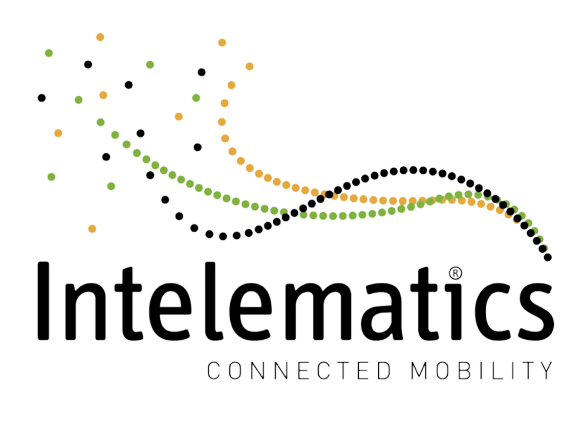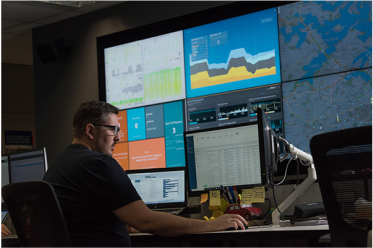
Intelematics Australia – Our Story
Rob Carter was the founding Chairman of Intelematics Australia and served in the role from 1999 until March 2003. Mr Carter resigned from the Board at this time and existing Board member, Colin Jordan, assumed the role of Chairman.
After a long engagement as Chair of Intelematics, Mr Colin Jordan retired on 1 March 2016. The position of Chair was taken up by Mr Neil Taylor, CEO of RACV.
In August 2016, Mr Rod Chapman took over the CEO role from founding CEO, Mr Adam Game. Mr Chapman retired from the CEO & MD roles in June 2020, at which time Mr Nick Marks was appointed to the CEO role.
Rob Carter was the founding Chairman of Intelematics Australia and served in the role from 1999 until March 2003. Mr Carter resigned from the Board at this time and existing Board member, Colin Jordan, assumed the role of Chairman.
After a long engagement as Chair of Intelematics, Mr Colin Jordan retired on 1 March 2016. The position of Chair was taken up by Mr Neil Taylor, CEO of RACV.
In August 2016, Mr Rod Chapman took over the CEO role from founding CEO, Mr Adam Game. Mr Chapman retired from the CEO & MD roles in June 2020, at which time Mr Nick Marks was appointed to the CEO role.
Key dates

1999
Intelematics established as an independent entity.
2000
Intelematics won rights to provide passenger vehicle telematics services to GM Australia/NZ.
2001
- · Holden Assist launched.
- · Intelematics secured rights to supply telematics services to Toyota.
2004
Toyota Link launched.
2005
- · Mitsubishi Diamond Trac launched.
- · Intelematics became 100% RACV owned (Sept).
2007
Suna Traffic Message Channel launched.

2012
Intelematics released Beta Connected Vehicle product.
2014
Directors from NRMA & Australia Club Consortium joined the Board.
2015
North American Auto Club app released.
2016
Intelematics Europe created.
2017
AA app released.

2018
RACV assumed full control of Intelematics and the Board.
2023
Combined with RACV's Digital and Digital Product team
Our journey
The early days
+Proof of concept (POC) work demonstrated telematics as a viable solution for the Australian motoring public. Intelematics commercialised this concept by creating CarCom, an aftermarket device that could be fitted to vehicles by authorised auto electricians that allowed the vehicles to be monitored and services to be provided around the clock by a specialist call centre. This device was capable of tracking stolen vehicles, immobilising vehicles, monitoring battery health and unlocking doors remotely. It had a button pad providing access to SOS services and some concierge services (supported by the RACV Call Centre and local emergency services organisations) and later used voice recognition for weather, traffic etc.
The experience and use cases gained from this POC enabled Intelematics to play a critical role in the adoption of telematics services by the Australian OEMs. Australia followed the lead of the US, European and Japanese vehicle manufacturers by introducing telematically enabled vehicles to the Australian market in the early 2000’s, and Intelematics was well placed with local capability and expertise to enable these services for Australian drivers
Gen 1 telematics
+In 2000, General Motors Holden released a tender for passenger vehicle telematics services on selected models using a factory fitted In Vehicle Unit (IVU) with the rear vision mirror having buttons and a microphone to form the Human Machine Interface (HMI). Intelematics responded to the tender competing against OnStar, GM’s own US-based telematics organisation. Intelematics was successful in winning the bid and secured the rights to provide the service to General Motors vehicles in Australia and later New Zealand.
By 2001, Holden Assist was successfully launched on a limited number of vehicles.
Toyota moved to introduce vehicles with the same hardware as Holden. Intelematics secured the right to supply Toyota with telematics services. Soon after, in 2004, Toyota Link was launched.
Mitsubishi wanted to provide their drivers with safety and security telematics services, specifically for their Lancer Evo 9 sportscar which had a history of being stolen. Mitsubishi had no factory supported IVU, so Intelematics provided the updated CarCom IVU and button pad, partnering with device manufacturer MT Data. Mitsubishi Diamond Trac was launched in 2005.
Intelematics continued with its aftermarket device and all programs had high renewal rates until the 2G communications network was shut down by the national carriers in 2018.
Suna
+In 2005, Intelematics embarked on developing a real-time, broadcast traffic service that could be transmitted to vehicles or personal navigation devices over the FM band, using a technology known as Radio Data Service – Traffic Message Channel (RDS-TMC). This involved creating traffic flow and incident information from various data services, predominantly road authorities, and broadcasting them to devices that would incorporate the messages in their route planning outputs in real time.
The Suna Traffic Message Channel was successfully launched in 2007, with the first releases in Melbourne and Sydney followed by the rest of the country and New Zealand afterwards.
Personal navigation devices (PND) which could receive traffic information were sold at retail stores including JB Hi fi and Harvey Norman etc until vehicles were released with navigation and RDS-TMC capability in volume, which led to the adoption of SUNA across millions of vehicles.
Connected Vehicle
+In 2012, Intelematics released its Beta Connected Vehicle product that involved the installation of an ODBII device into the vehicle and an associated app. This was focussed on the Australian motoring club membership community. This service was launched in Victoria, Western Australia and South Australia.
In 2013, Connected Vehicle Applications were released for RACV, RACWA, FordSync, Toyota Link and Lexus Enform.
To help drive adoption of a national approach to Connected Membership, the constitution of the Board and ownership was changed. RACV remained the majority shareholder and Directors from NRMA and the Australian Club Consortium were invited to be part of the Board in December 2014.
To assist with developing the Connected Membership capability, conversations took place with AAA US through the Automobile Club of Southern California (ACSC) about a Joint Venture. In 2014, Intelematics North America launched and soon afterwards, version 1 of the North American Auto Club app was released in 2015.
Similarly, negotiations were reached with the AA UK, ANWB Netherlands and OAMTC Austria to create the Joint Venture company Intelematics Europe in 2016, with the first app released by the AA in 2017.
Both the Connected vehicle app and OBDII led to the Connect service that was part of the Intelematics product suite until 2022.
The product approach
+Under the direction of Rod Chapman, Intelematics moved to a more dedicated Product led approach in how it was going to address the market. Intelematics had previously had several successful products so a model was adopted to lead with products supported by a professional services capability. During this time, the Intelematics organisational structure was modifed and roles such a Product Manager and Product Owner were more widely adopted. Products were marketed and sold differently, including self-serve via a web portal, and new developments were undertaken in a product development approach using self-contained product teams. The product suite was made up of:
- ASURE – the eCall telematics platform
- INSIGHT a data engine that provided traffic flow and origin / destination information through a front end for ease of analysis – also available as raw data and through API
- CONNECT which was the next generation dongle based connected car solution, and
- TOASTi a machine learning based incident engine.
FAILSAFE a battery health prediction service was conceived as was a Green Light advisory system. SUNA continued be the leading broadcast traffic service. It was during this period that the business moved away from hosted infrastructure to cloud based (AWS) services to streamline and improve the running of its complex product suite. Also, during this period some of the large internally developed platforms (notably the Telematics Services Hub) were deconstructed and enabled as smaller microservices, creating modularity and flexibility.
Moving forward
+Following a strategic review in December 2021, the business set out on a new growth trajectory focusing its investment and effort on Asure, Failsafe and Toasti. Its aim is to leverage the value in accident, incident and connected vehicle data while continuing to support and maintain existing mobility services. These products will play a key role in the future ambitions of the business as it looks to extend its presence in the vehicle manufacturer, Government, Fleet and Auto Club markets. Some significant recent achievements include Failsafe achieving a US patent in 2022 and two new US-based trials being established in 2023. Failsafe’s ability to predict battery failure using AI, reducing downtime is gaining industry attention and global recognition.
By combining with the digital and digital product team in July 2023, it is well-positioned to leverage centres of excellence and knowledge across the RACV Group.


